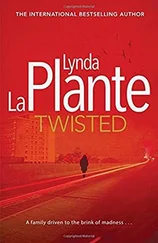Suddenly there was a bellow. Langton was holding up his sandwich, waving it around.
‘I said it not once but twice: no fucking tomatoes, Jean!’
‘I asked them for no tomatoes.’ Jean was red-faced.
‘Well, it’s full of them! You know I hate tomatoes!’
‘Would you like me to take them out?’ Jean retorted, but Langton was already chucking them into the bin.
Anna lowered her head; she hadn’t eaten since breakfast. No one here had offered her so much as a cup of tea or coffee. Her presence seemed to go unnoticed. She located her briefcase and had just taken out new pencils and a notebook when she realized it was almost four o’clock.
Teresa Booth was forty-four when her body was found on waste-ground near the Kingston bypass. She had been a prostitute, though not from that area. Teresa worked the red-light district of Leeds for many years.
With the busy road so close, not many pedestrians used the area and the victim had been found by a boy whose scooter had broken down. Wheeling it off the busy road onto the narrow pavement, he had glimpsed a foot through the undergrowth. After scrambling up the ridge, the boy found the body. The corpse’s hands had been tied behind her back with a bra; she had been strangled with a pair of black tights. The body had remained undetected behind bushes for three to four weeks. It had taken longer — four months — to identify her. This discovery was in 1992.
The mortuary photographs were attached, with pictures of the murder site. Teresa’s face in death had a terrible, haunting ugliness. Her skin was pockmarked and she had a deep scar on one cheek. Her bleached blonde hair had black roots showing. The initials ‘TB’ on her arm appeared to have been scratched or cut and she had a faded pink heart tattooed on her right thigh. She had severe bruises to her genital area.
‘TB’ had been traced to Terence Booth, her first husband. Teresa had subsequently been married three times. Though she had three children, none of them appeared to be by any of her husbands. Two were sent to foster care at a very early age, while the youngest, a boy, had been living with her mother.
Teresa looked a lot older than her forty-four years. Hers was a sad, murky history. She was an alcoholic who had spent time in prison for persistent prostitution offences and for ‘kiting’, which meant she was caught using stolen credit cards and passing dud cheques. She was identified by her fingerprints and from her photographs.
‘Travis!’ Anna looked up. Mike Lewis was gesturing at the door for her to get a move on. She had been so engrossed, she hadn’t noticed the gradual emptying of the incident room. ‘Briefing room,’ Lewis explained before disappearing.
Anna was hurrying after him when Jean called out: ‘Don’t leave the files out, please; return them to the cabinet.’
Anna zigzagged back to the desk, where she collected the half-read file and replaced it. When she asked where the briefing room was, Jean said sharply, ‘Second door on the left, one flight down.’ As Anna exited rapidly, she could hear Jean moaning to another woman. ‘I’m sick to death of him having a go at me. It’s not my job, anyway, to go schlepping out for his lunch. They’re all bloody foreign in there, don’t understand a word you say to them; “no tomatoes” and he gets layers of them!’
Anna flew down the narrow stone steps and along a murky corridor. The hubbub of noise drew her easily to the briefing room. Rows of chairs had been placed in haphazard lines and a desk and two chairs faced them. The large dingy room smelled of stale tobacco, even though there were stained yellow notices demanding ‘No Smoking’.
Anna skirted her way along to a vacant chair at the back, where she sat clutching her notebook. Up front, Lewis and Barolli were joined by eight detectives and six uniformed officers. The two female detectives were a large blonde woman who looked to be of retirement age and a tall thin-faced woman in her mid-thirties with badly capped teeth.
The superintendent who had overall charge of the enquiry, DCS Eric Thompson, entered, closely followed by Langton. Thompson had an athletic look about him: his face fresh, his shoulders upright; he stood as if poised on the balls of his feet. His thinning hair was combed back from a high forehead. Langton by comparison looked tired and crumpled and in need of a shave. Barolli was loosening his tie in a seat nearby.
‘Quieten down!’ Langton barked. He perched on the edge of a desk and leaned forward to address the room.
‘The victim was formally identified today by her father. She is, or was, Melissa Stephens, aged seventeen. We suspect she is a “possible”. Her boyfriend’s statement on the night she went missing is all we have to go on so far, but it is my belief that Melissa strayed into our killer’s target area. To date all his victims have been hardened prostitutes, all in their late thirties or early forties. Melissa may be our biggest breakthrough yet. It’s imperative we move like the clappers.’
Anna made copious notes, but not being privy to any of the previous case files, she had no idea what Langton was talking about most of the time. What she picked up was the following: on the night Melissa disappeared, she had an argument with her boyfriend. This had occurred at a late-night cafe close to Covent Garden. She was last seen walking in the direction of Soho. The boyfriend assumed she was heading towards Oxford Circus tube station. He finished his drink and headed after her. But Melissa, it seemed, had found a shortcut, perhaps down Greek Street. Inadvertently, she went through the red-light district.
Though Melissa’s boyfriend, Mark Rawlins, called her mobile phone incessantly from the tube station, it was useless. The phone had been turned off. Frightened for her, he retraced his footsteps, hoping he’d bump into her. After returning to The Bistro, around 2.30 a.m., he went back to Oxford Circus tube station, then on to Melissa’s flat, but she had not arrived home. Neither Mark nor her three flatmates ever saw Melissa again.
The following day, after calling her parents in Guildford and everyone else he could think of, Mark finally contacted the police. Forty-eight hours later, a missing person’s file was lodged and circulated, along with photographs and requests for information.
No one came forward, even after a television reconstruction shown four weeks after her disappearance. They had not one eyewitness who could give a clue to her disappearance, with the possible exception of a waiter who had been smoking a cigarette outside a renowned gay club and who saw a blonde girl talking to the driver of a pale-coloured, or maybe white, car. At the time, he assumed she was a prostitute, he said. Though he didn’t get a good look at her face, he did notice her black T-shirt, which had diamante studs that sparkled in the neon lights outside the massage parlour opposite.
Langton suggested that their killer, who haunted red-light districts, could have mistaken Melissa for a call-girl: outside a strip joint very late at night, a blonde in a sexy outfit, short skirt and strappy sandals — could their killer have been the one to pick her up?
Though the briefing continued for another hour, the super finally insisted they did not yet have enough information for him to take to the commander and request this murder enquiry be handed over to Langton’s team. Hearing this, Langton jumped to his feet, holding the photos of the six dead women like a pack of cards.
‘Their hands tied with their bra, strangled with their own tights. If forensic can verify that the knots around the neck and wrists were tied in a similar way, then Melissa Stephens becomes the latest victim of a serial killing. If we get this case then we’ve some hope of catching the bastard, but we’ve got to move! Any time lost in farting around begging for the enquiry is a fucking waste of time!’
Читать дальше












